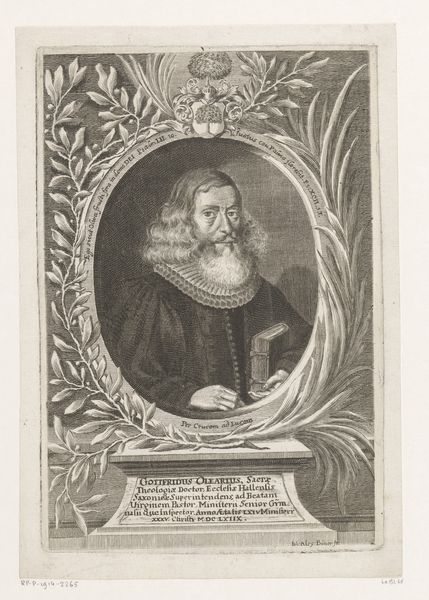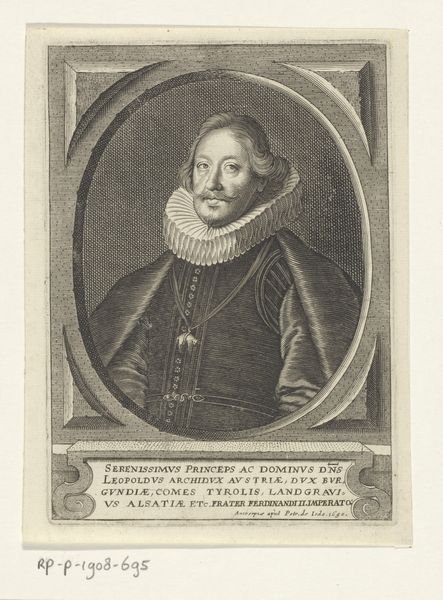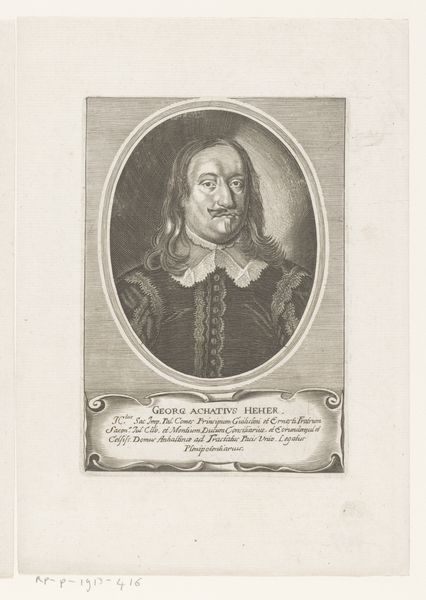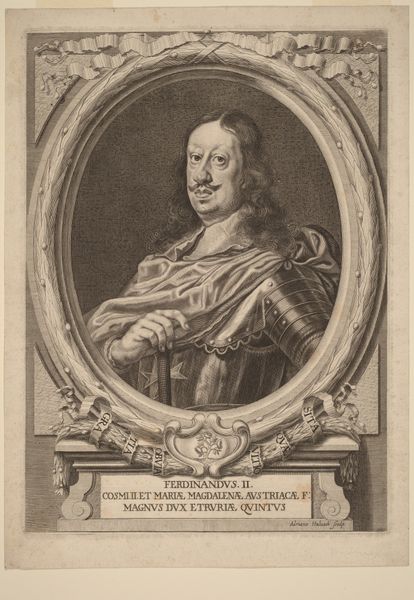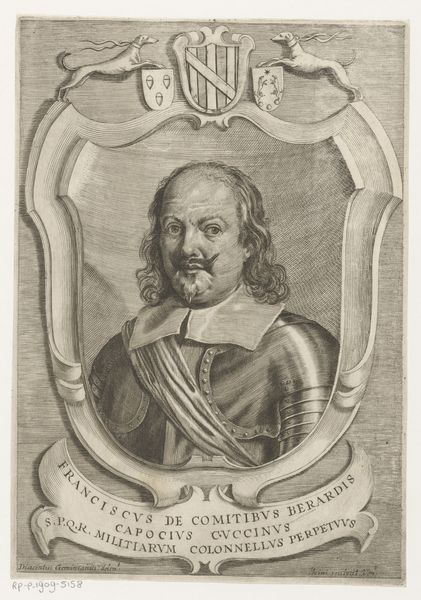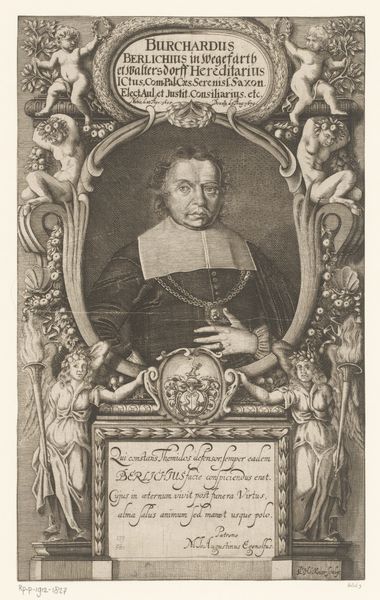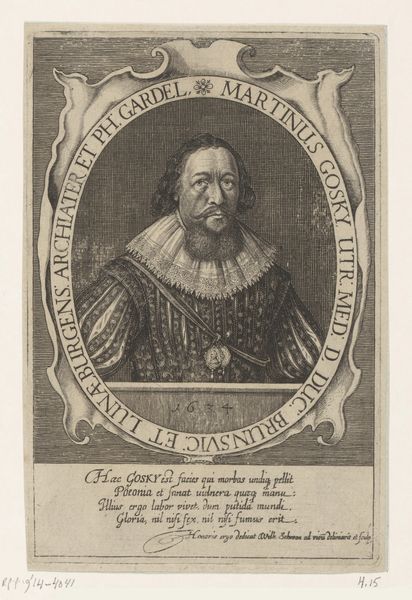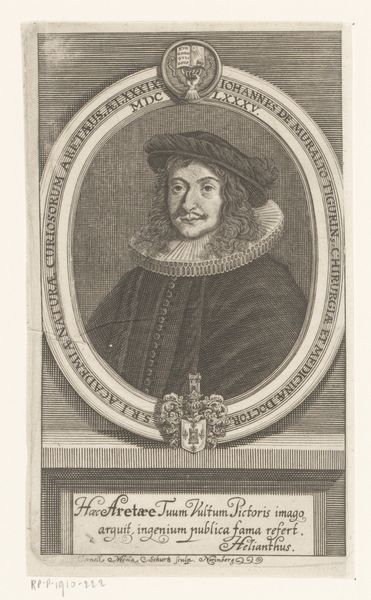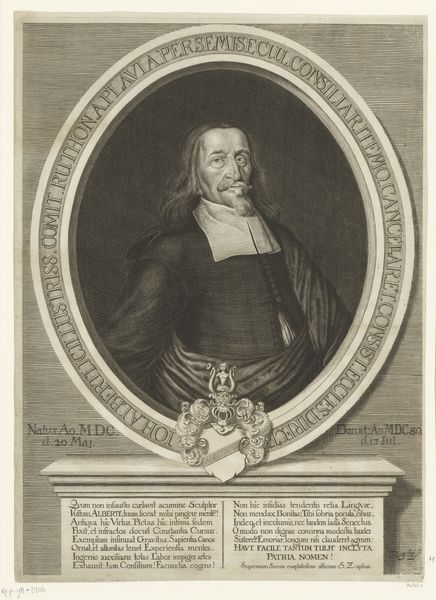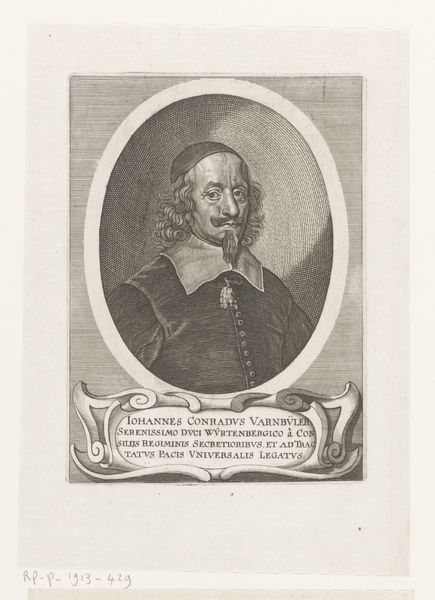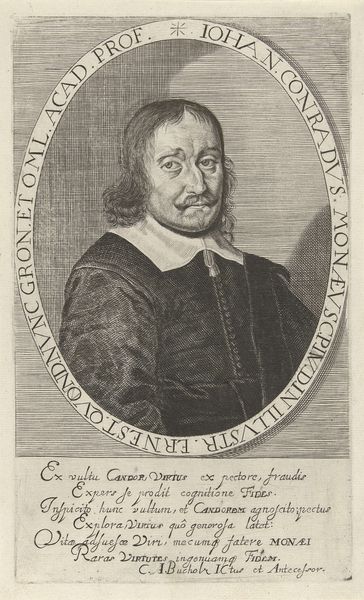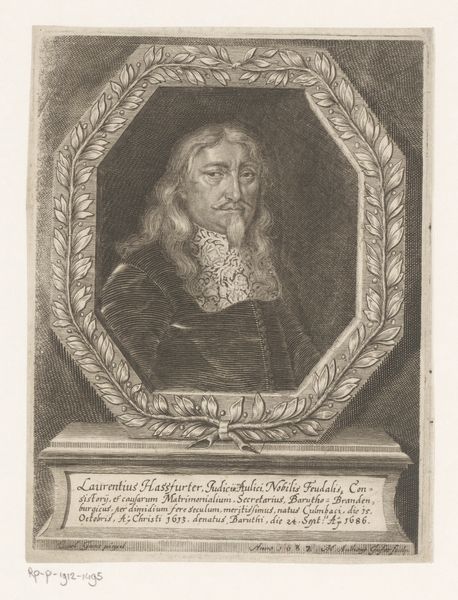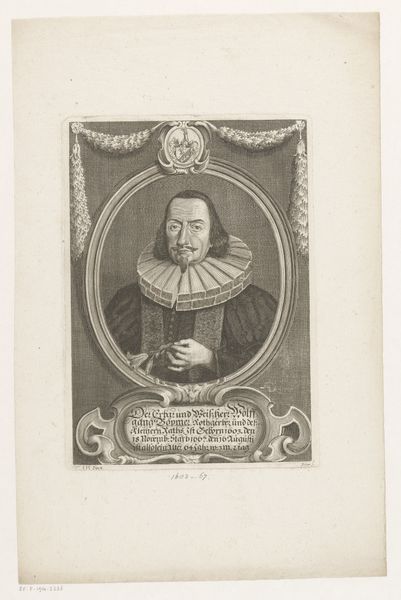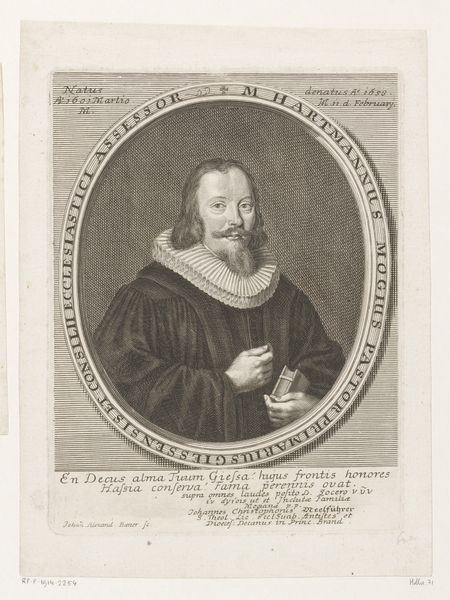
print, paper, engraving
#
baroque
# print
#
paper
#
14_17th-century
#
engraving
Dimensions: height 199 mm, width 145 mm
Copyright: Rijks Museum: Open Domain
Curator: We’re looking at a portrait of Johann Paul Löffelholz von Colberg. This engraving, dating from around 1658 to 1665, offers a glimpse into the life of a man who served as Pfleger—sort of like a regional administrator—in Lauf, near Nuremberg. Editor: He looks rather severe. There's a weightiness to the image, a solemnity. The oval frame decorated with scrolls certainly reinforces the feeling of established authority. Curator: That Baroque framing device and the precise detail achieved through the engraving process were indeed intended to convey status and importance. Prints like this circulated widely, solidifying the subject’s reputation. Editor: And, perhaps, conveying a specific image that the family wished to promote. What’s striking is the direct gaze. It challenges the viewer. There's also a certain earthiness that defies the ornate framing. Curator: He holds quite a powerful, determined gaze. Consider the broader context: the aftermath of the Thirty Years’ War, the rebuilding of societal structures. Representation was key in reasserting power and order. Editor: Exactly! And who controlled the narratives? Portraits of men in positions of authority reinforced a patriarchal system. It subtly signals who holds power. And who *doesn't.* What does it mean to present only these men? Curator: Precisely. By studying these images, we get insight not only into an individual's identity, but also to understand systems of power. Notice his garb, it marks his standing. Each button, each embroidered detail, signifies something. Editor: Yes, and this can make us reflect upon the individuals whose contributions weren’t recorded, whose stories are missing from the mainstream history… those voices we actively work to amplify today. This is also a reminder that archives need to be constantly re-evaluated and broadened. Curator: Indeed. Looking closely at this print tells us so much, doesn’t it? Editor: Absolutely, it serves as a great stimulus for talking about representation, power dynamics, and the very concept of who and what constitutes history.
Comments
No comments
Be the first to comment and join the conversation on the ultimate creative platform.
